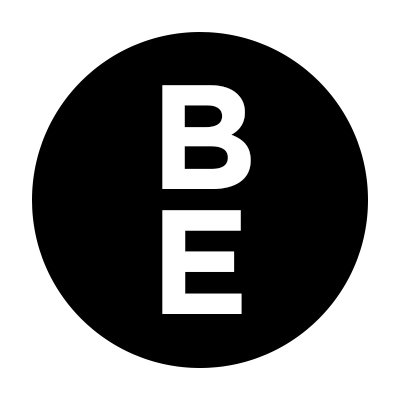Audience Segmentation and how to start the process
Image by Anna Sullivan on Unsplash
What is segmentation?
Audience/customer segmentation (for the purpose of this article we’re going to use the term audience, but it could be interchanged with customer at most points) and market segmentation is the process of splitting audiences or markets into different groups based on various criteria.
Audience segmentation is the segmentation of those people that you are already able to communicate to and are actively engaged with you already, whereas market segmentation is the segmenting of the entire market available to you.
By splitting our audience or markets into these segments we’re able to tailor and develop products, service and communications to specific people with the hope that we’re more effective at providing people with what they want.
Types of segmentation
There are typically 5 types of segmentation used in marketing and product or service development. These are:
Demographic - segmenting your audience by factors such as age, gender, education, occupation. By dividing your audience by these factors you can reach people in specific life stages or of a particular economic profile.
Psychographic - this type of segmentation relates to things such personality traits, opinions, lifestyle choices or other interests. This can help with distinguishing between two markets that might look demographically similar, but behave differently based on one of factors listed above.
Behavioural - our typical behaviour might make us quite different from another customer in marketing or purchasing. For example, one might like to spend 6 months researching an item online before purchasing in a physical store, someone else might be more impulsive in their purchasing behaviour or someone else like to order on a regular, repetitive basis.
Geographic - Segmentation based on the location of the audience. Might be used for products or services that are designed specifically for a particular climate or culture, or proximity to a particular location you offer services from.
Firmographic - Predominantly used in the B2B market as it relates to the characteristics associated with organisations. It can include factors such as industrial sector, legal status (plc, ltd. etc in the UK), years in business, size (number of employees usually), geographical location.
As you can see, there are a range of ways of segmenting your market and audience, all of which will have more relevance to different types of product or service.
Starting up and having no audience
When you start a new business in all likelihood you’ll have very little audience and need to start afresh, building and developing a community of people that over time will become your customers.
Unsurprisingly, this means that you’ll have no audience segmentation of any real value to start with. However, this doesn’t mean that you don’t need to think about what audience segmentation you might use in the future and what method of segmentation might be most appropriate.
What you should be able to do is get a sense of your market segmentation. Part of your product and service development should have included establishing who you believe your customers are and what their attributes should be, to help you reach them better by fulfilling their needs. Persona development is a great way to record this and start the process of collecting information that can help with segmentation later.
Persona development
Persona development is an essential part of developing and better understanding your audience. It allows you to record various segmentation factors in one place, ensuring that when you create your products or service, or marketing communications, you’re doing it in an informed manner and targeted at an audience or market profile that you’ve already identified.
It also helps you to emphasise and in some part understand the needs of your target audience, to help speak their language of needs and meet them in the places they turned to for help or advice.
We wrote another article that is focussed on how and why to develop personas and we’ve also created a basic template for you to download and use to help you get started.
Read our article on persona development and download our persona template.
How to choose what to segment by
Choosing what to segment by is most likely to be driven by the type of product or service you are developing and promoting. In all likelihood, you may find yourself segmenting by a number of different segmentation types. For example, in a B2C market, you could easily find yourself segmenting by both demographic and geographic factors. Imagine a new gym chain developing its targeting around the new branch it has opened.
Again, this is where Persona Development can really help. It can allow you to walk through purchasing journeys with a specific persona in mind.
What you probably don’t want to do is to segment too much, initially. Each segment requires new communication considerations and development and individual marketing streams on paid or email communications. This takes time and effort, not just to write in the first place, but to maintain and analyse the effectiveness.
With time, you’ll be able to allocate larger budgets to this type of activity, allowing you to utilise more resources to manage and employ greater automation tools to help you streamline both the deployment of the additional segmentation, but also to analysis.
Evolving segments with time
As with all things in developing a new business or organisation, it doesn’t stand still, and you can’t stand still either. As an organisation or business grows its audience, so should your understanding of that audience.
But bigger isn’t always better.
With time and experience, you’ll gain a greater understanding of what works for your organisation with product or service development. There might be other factors at play that shape the trajectory of your business, for example production development or restraints might push you down a particular avenue.
You’ll also start to get a feel for your customers within the market, as your brand develops you’ll get a better understanding of who your people are and why they choose you as a provider of the service or product you offer.
This will allow you to fine tune your segmentation and personas to better meet the shape of your various customer profiles. Don’t be afraid to revisit already developed persona profiles and adjust them as you learn, all organisational or business growth is a matter of testing and learning, no one knows all the answers from the start and in all likelihood you never will. But you will grow in your understanding of your audience as you grow as an organisation, if you’re listening.
How you can help to gather segment details
We recently wrote a short piece on the wellbeing and wellness sector and what you can do to get a better understanding of your audience needs, including what you can put in place to gain this knowledge. Whilst this article was focussed on the wellbeing sector, the same principles apply, whatever sector you’re operating in.
A richer understanding of your market or audience can come from qualitative research work, but there are things that you can and should do to start this process from day 1. All of these activities will inform how you can approach market and customer segmentation at a later stage.
These are just a few ideas you could implement.
Feedback from clients
We shape our own workflows and processes as a start-up or early stages business as they are needed, but often what is done in the early years is the foundations that future work is built upon. Building a feedback loop into your service and product delivery can help you normalise a process that can be insightful and rich in detail that can help with shaping segmentation later.
There are various points in the journey that you can implement this types of feedback loop, these are just a few you might what to consider for appropriateness:
On-boarding - when you bring a new customer or audience member on-board you have the opportunity to ask them a series of questions about how they found you, a little bit more about their background, or how they found the on-boarding process. Depending on what service or product you’re providing the depth of this will need to be measured appropriately.
Post project - this is for those delivering service based solutions, rather than product based, but equally it could be used at product delivery. A quick review of what worked, what didn’t, possibly other demographic details can be completed here if you don’t know them already. Some behavioural insight too, frequency of future implementation (of a service) or interest in subscription based services etc.
Fixed reviews - 6 monthly or annual reviews. Follow a similar format to the post project, but allow you to put a date in the calendar to provide a feedback loop from your audience members to you about how they’ve found working with you, what they like etc.
Email and further integration into eCRM platforms are often the frameworks for storing a lot of segmentation data, but also often the place where segmentation of market and audience members is most tangible, visible and frequently used.
Automated email flows, triggered by web behaviour or engagement with other online tools are usually an easy way for you to identify specific behaviour about your audience. An obvious psychographic insight to gain is activity around different types of content type, going back to the article we wrote on wellbeing and performance at work, what types of content are they engaging with that is answering the needs they have in their role at work? Are they seeking to build better interpersonal skills within their team for example, or are they more interested in measurement of productivity and seeing ROI on projects, these factors can help you to decide which comms segment they might need to go into in the future or what product is showing the potential for future development and resource investment.
Web analytics
Web analytics are a great baseline for building segmentation information. There’s geographical data that is relatively easy to collate and segment, although you do need to move it from an anonymous state to an identifiable state using downloads or other exchanges of value on your web platforms.
But even at an anonymous state it can provide you with helpful insights. What keywords are more popular in what region? What regions are interested in exploring what you have to offer in more detail, and therefore potentially a warmer market for you to explore.
Google Analytics 4 has a lot more granular information available off the shelf now, but you need to configure your tracking correctly in order to gain this insight. As a side note from an ethical point of view, you also need to let those that are visiting your website know that you’re gathering this information about them with the aim of providing them with more appropriate services or products in the future. You should always provide the option to opt out of this type of data collection.
Need some help to do this?
We’re always happy to help people to get started with this type of work. Whether you’re startup finding your feet or a growing brand wanting to define your audience with greater clarity.
We’ve got a number of ways to help, check out the below to see just some of the ways we can.


